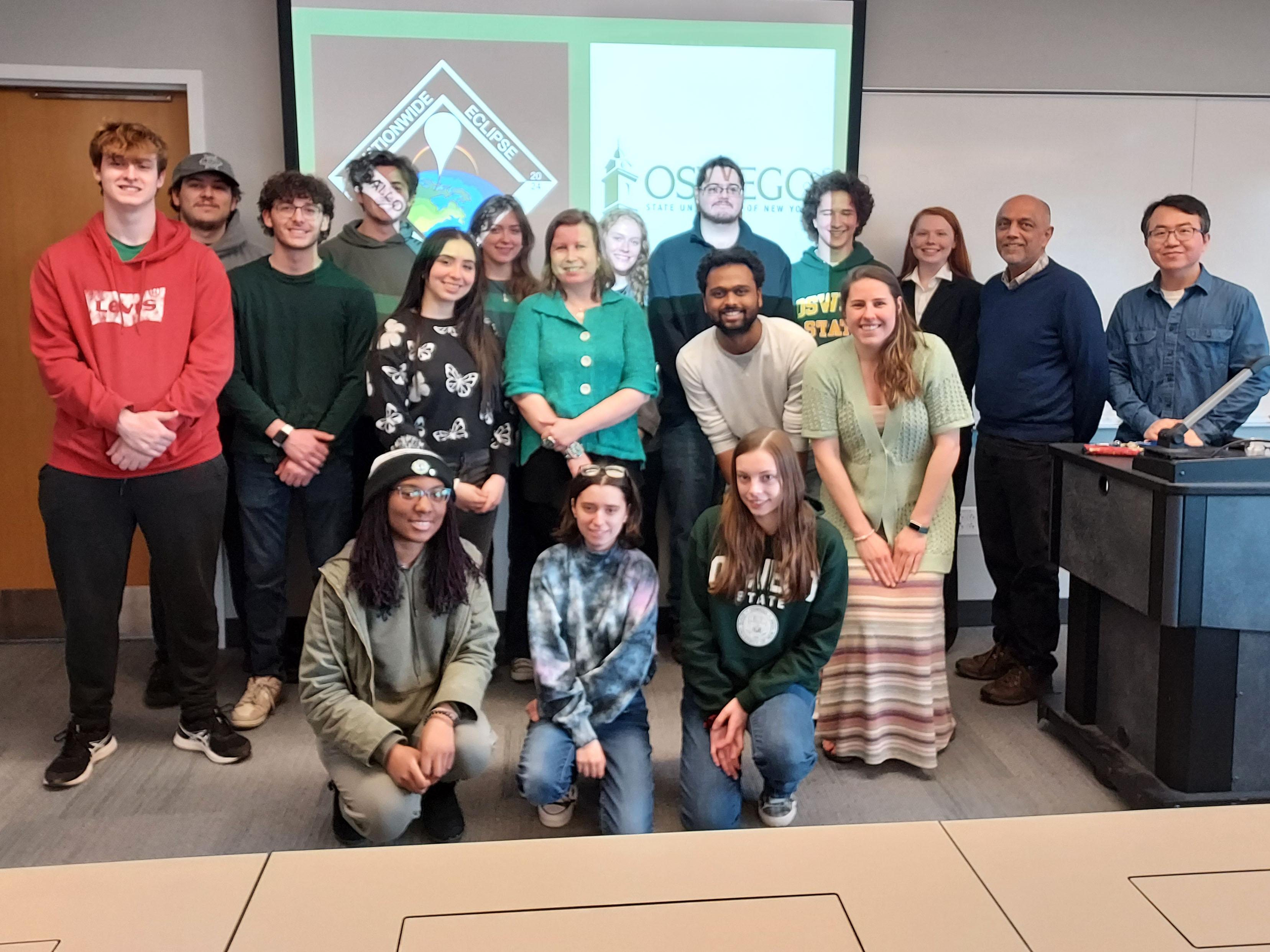Students and faculty look forward to conducting research during two upcoming eclipses as part of the Nationwide Eclipse Ballooning Project, funded by NASA and the National Science Foundation.
Several SUNY Oswego students will travel to New Mexico this October and in April 2024 to research the upcoming eclipse, and more will engage in eclipse-related experiments, thanks to funding from NASA and the National Science Foundation (NSF).
Oswego students who applied to work with the Nationwide Eclipse Ballooning Project (NEBP) come from a variety of majors both within STEM (science, technology, engineering and math) and other majors. Their work will take place as part of a meteorology class, MET390, in fall 2023.
NEBP is a program sponsored by the by NASA and the NSF to broaden participation in STEM learners through immersing teams from higher education institutions in an innovative NASA-mission-like adventure in data acquisition and analysis during the Oct. 14 annular solar eclipse and the April 2024 total solar eclipse.
SUNY Oswego’s NEBP team consists of 16 students, six of whom will make the journey to Moriarty, New Mexico, with faculty members Katelyn Barber from meteorology and Natalia Lewandowska from physics.
Other faculty involved in the research and educational components of the project include Shashi Kanbur of physics and Yonggang Wang of meteorology.
Student participants will work with atmospheric science experts throughout the project and will publish results in peer-reviewed journals. Teams will launch helium weather balloons with radiosondes into the stratosphere hourly to measure atmospheric phenomenon under rare conditions.
'True scientific beauty'
This traveling group includes Aurora Fitzgerald, a broadcasting major and assistant chief meteorologist for the student-run WTOP-10 TV station, who is looking forward to both the experience and memories to be made.
“I hope that by reporting this event and showing people the true scientific beauty of it, it will get our news more recognition because every single person in the studio works so hard to make every night of news an amazing one,” said Fitzgerald.
Students with majors involving sciences also are looking forward to the hands-on experience that this project will provide, including meteorology major Sarah Gryskewicz.
“I became interested in this opportunity because this is a unique area of science to research. Not only am I interested in the atmosphere and how it affects our everyday lives, but I am also interested in what lies beyond it as well,” Gryskewicz said. “When I heard about this project and its objectives, I was immediately hooked and prepared to apply for a position on the team.”
Each student will play a different role in the project and collecting data, while also gaining knowledge about their field of study and other areas.
“Physics plays a huge role in this project, but you can say that about anything really,” said physics major Vincent DiBattista.
“One part that physics has the biggest say in pertaining to this project would be that eclipses such as the one we are going to work under only happen because the Moon orbits Earth at a certain degree off of its axis, so you can imagine instead of being a flat horizontal line, it's instead slightly angled upwards,” DiBattista said. “That is why solar eclipses don't happen all the time and are one of the rarer events that happen in day-to-day life.”
These research projects have been open to all students of any major as there are many ways to get involved. DiBattista, whose role is also to work on public relations for this project, hopes students of any major take the chance to be a part of these kinds of opportunities.
“I cannot stress enough to take these opportunities,” DiBattista said, noting that students can get a lot out of the experience, regardless of their level of science background.
"Because even if the goal for NEBP is a science-based goal, it also aims to get communities everywhere engaged in natural science and to work together towards a common goal," DiBattista said. "Now that is a great reason, but on a personal level also having an experience with NASA would most certainly be an eye-opener for any employer or admissions office going forward.”
Watch SUNY Oswego News for more updates related to student projects and the eclipse as the events approach.
-- Written by Lila Boudissa of the Class of 2023




